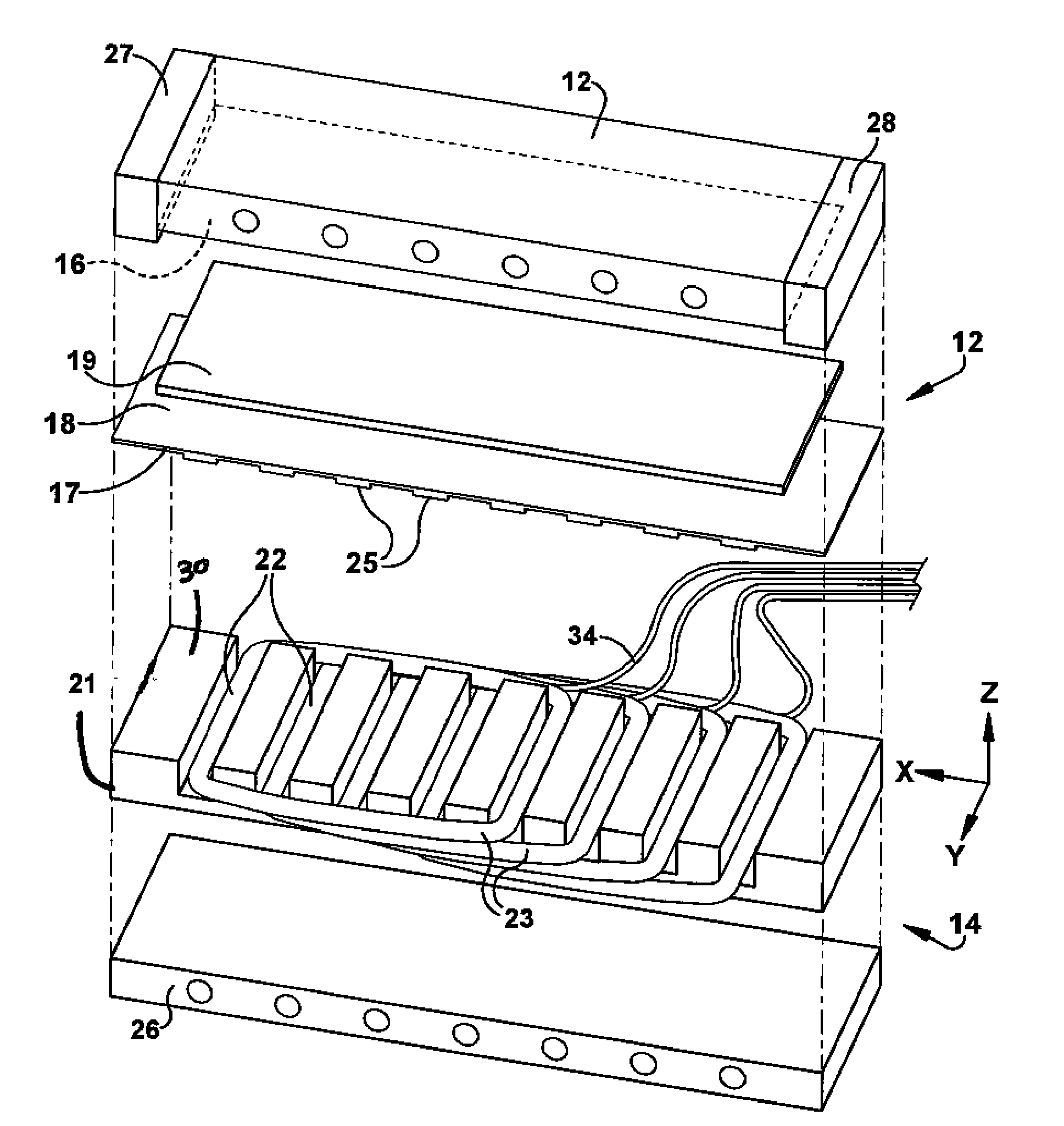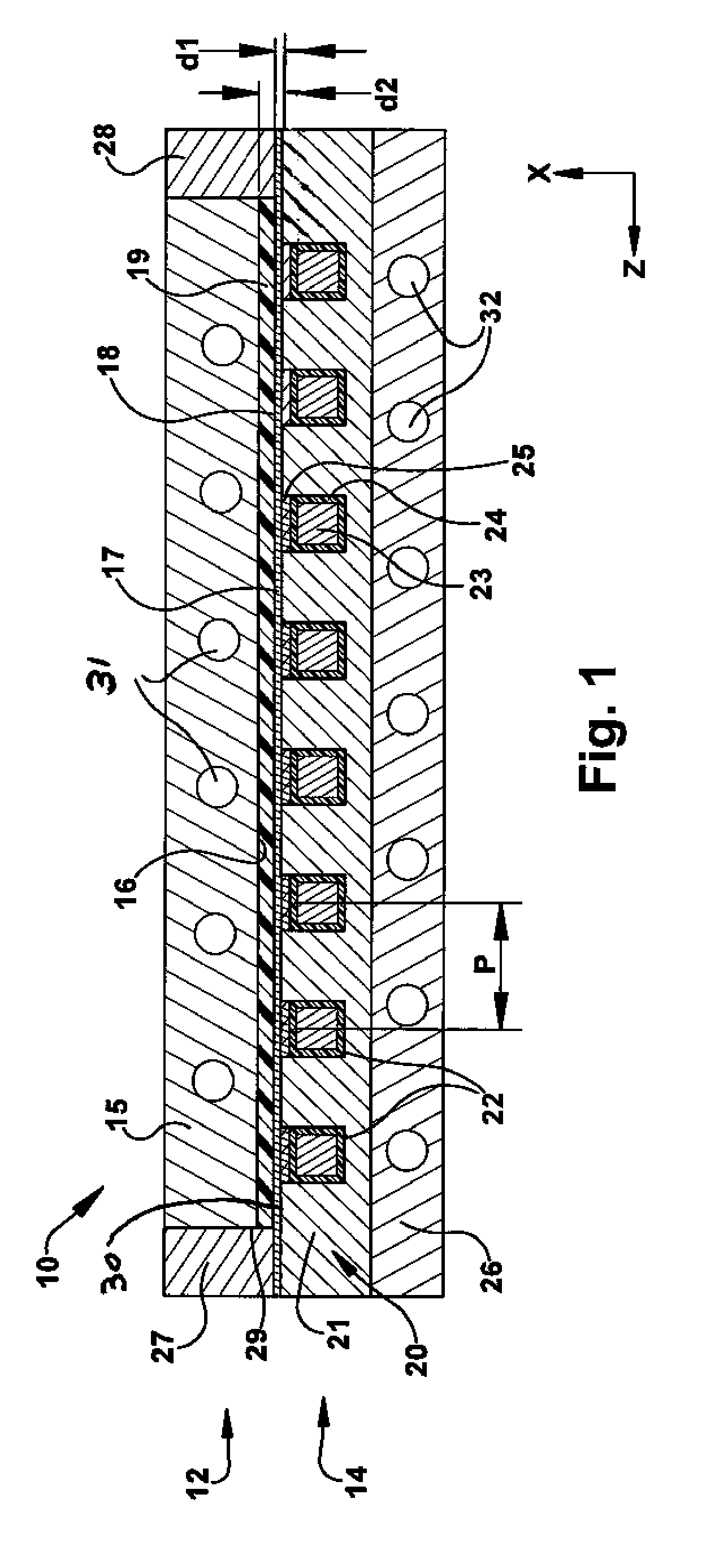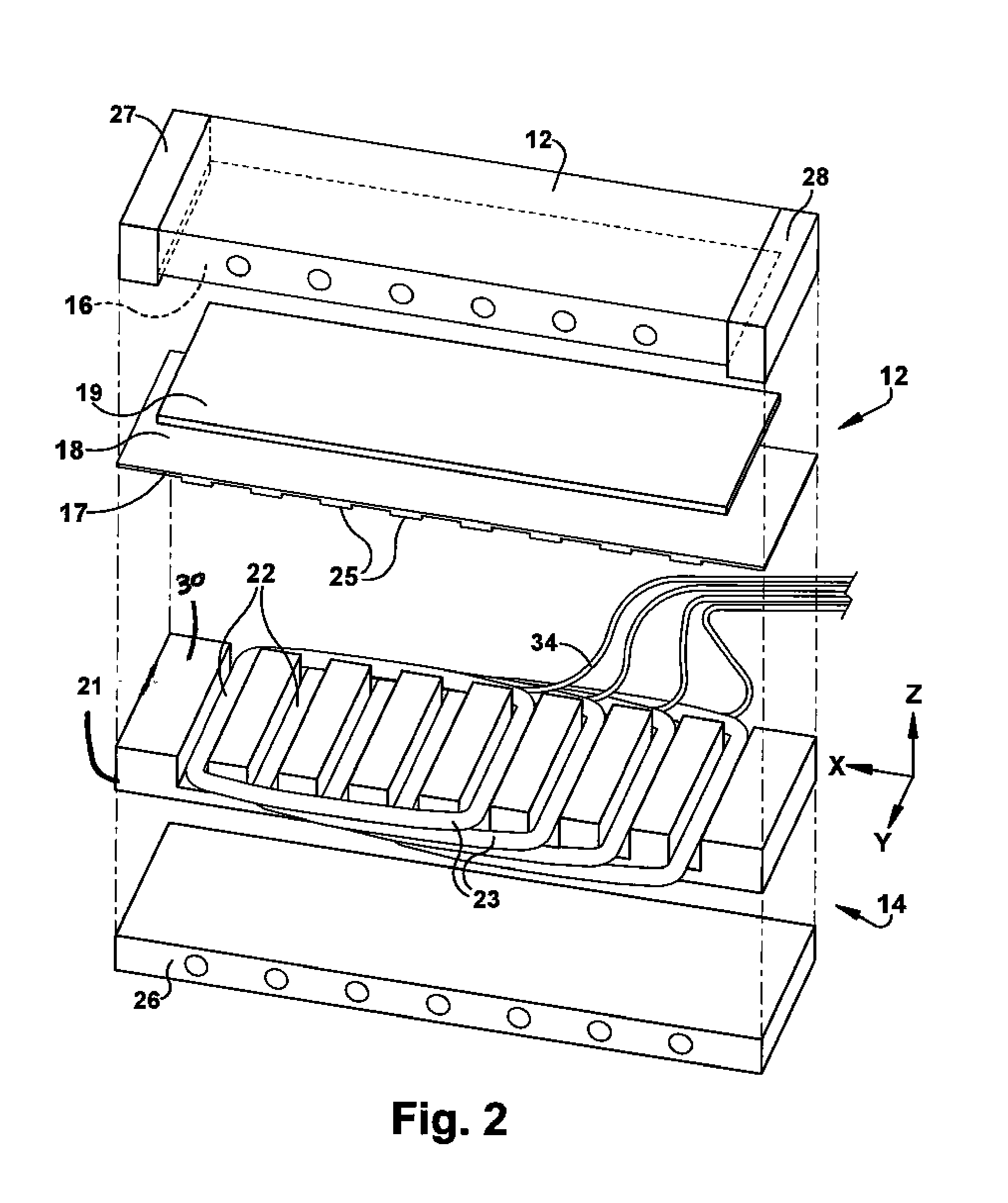Mold apparatus for forming polymer and method
a technology of molding apparatus and polymer, which is applied in the direction of manufacturing tools, induction current sources, electric/magnetic/electromagnetic heating, etc., can solve the problems of affecting the surface appearance and cycle time, overheating during processing, and adhesion of parts to the mold cavity, etc., to achieve excellent surface finish, reduce energy consumption, and heat quickly
- Summary
- Abstract
- Description
- Claims
- Application Information
AI Technical Summary
Benefits of technology
Problems solved by technology
Method used
Image
Examples
Embodiment Construction
[0019]The present invention provides for a mold apparatus for forming a polymer part via induction heating. Polymer disposed within a mold is formed by inductively heating the mold and the polymer formed by the mold. In one embodiment, one half of the mold which contacts a surface of the polymer includes an induction heating unit which heats the second half of the mold which also contacts another surface of the polymer. The mold apparatus for forming polymer can be used for several types of thermoforming and molding methods. For example, thermoforming methods include vacuum forming, plug assist thermoforming, pressure forming, match metal forming, etc. In addition, the mold apparatus 10 can be used for several types of molding, such as injection molding, compression molding, and plastic stamping.
[0020]FIG. 1 is a cross-sectional illustration of a mold apparatus 10 for heating a polymer. The polymer may be an unfilled, neat resin or it may contain reinforcement fibers and / or mineral ...
PUM
| Property | Measurement | Unit |
|---|---|---|
| saturation flux density | aaaaa | aaaaa |
| distance | aaaaa | aaaaa |
| distance | aaaaa | aaaaa |
Abstract
Description
Claims
Application Information
 Login to View More
Login to View More - R&D
- Intellectual Property
- Life Sciences
- Materials
- Tech Scout
- Unparalleled Data Quality
- Higher Quality Content
- 60% Fewer Hallucinations
Browse by: Latest US Patents, China's latest patents, Technical Efficacy Thesaurus, Application Domain, Technology Topic, Popular Technical Reports.
© 2025 PatSnap. All rights reserved.Legal|Privacy policy|Modern Slavery Act Transparency Statement|Sitemap|About US| Contact US: help@patsnap.com



